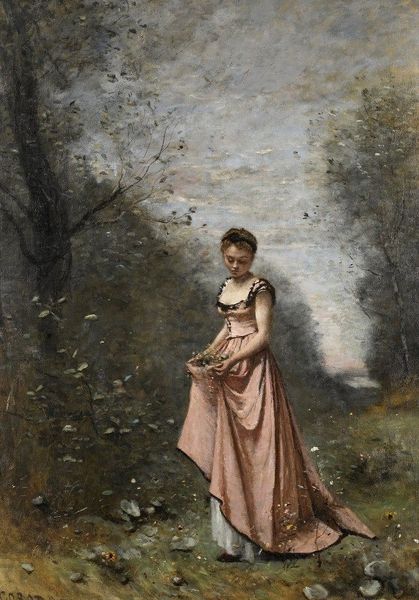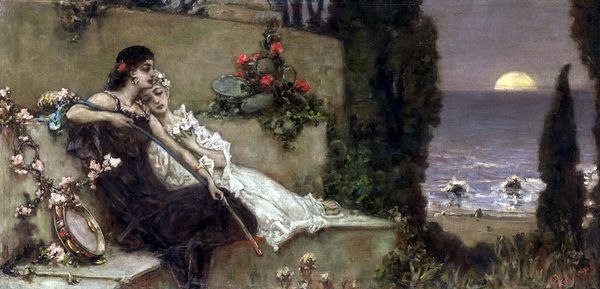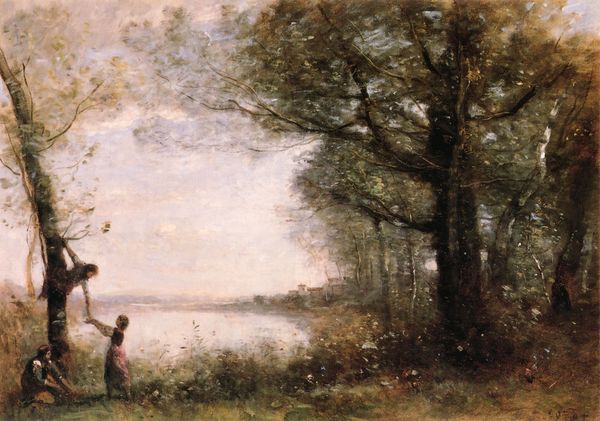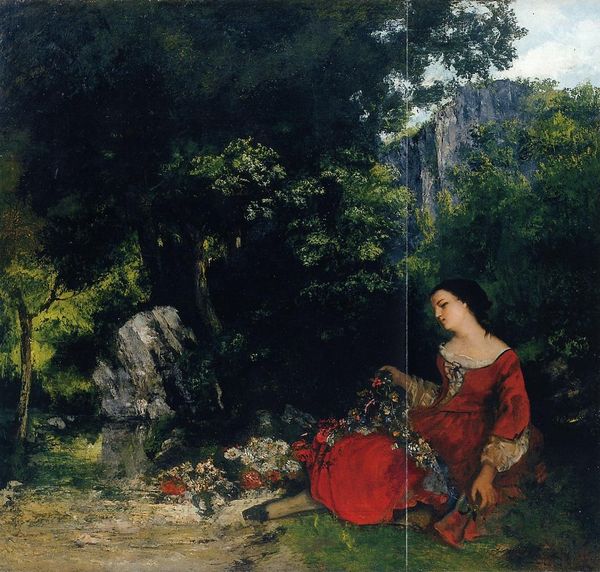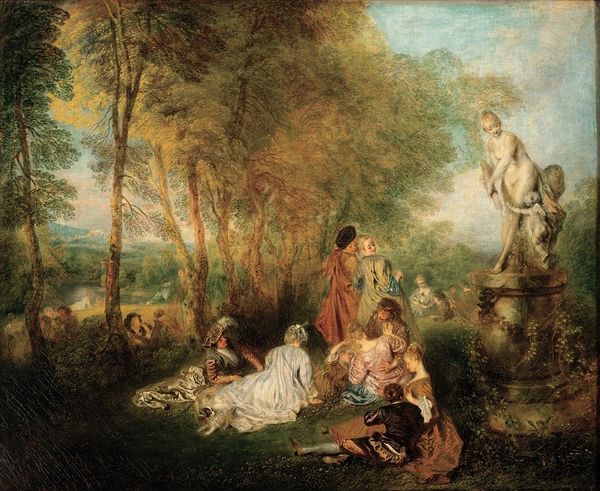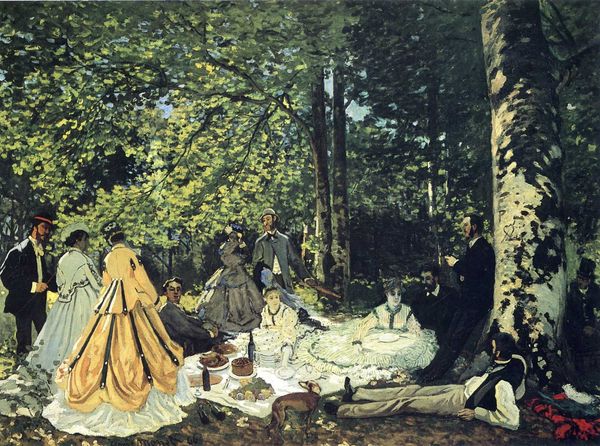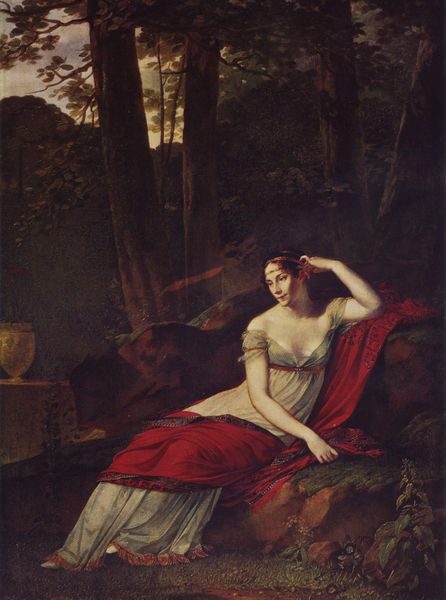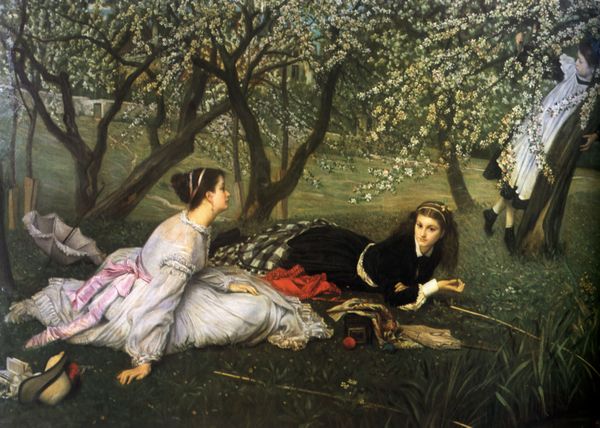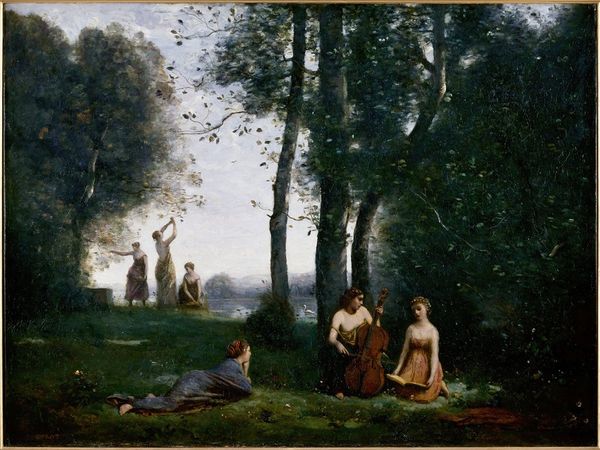
Dimensions: 104 x 140 cm
Copyright: Public domain
Curator: Standing before us is Gustave Courbet's "Woman of Frankfurt," completed in 1858. Editor: My first thought is: serenity. The subject's posture, the way the light falls, creates a palpable sense of peace, doesn’t it? It has almost idyllic qualities. Curator: Indeed. And what's intriguing from a structural standpoint is how Courbet balances the formal portrait with the expansive landscape backdrop. He manipulates the tonal range across both elements to generate equilibrium. Editor: But think about the means through which he achieves this: Courbet was challenging the conventional boundaries of academic art, employing looser brushwork. And consider the materiality of her dress; such details reflect the societal value placed on domestic craft and production. Curator: Certainly. However, I am drawn to the semiotic language embedded in her posture. The slight turn of her head, the almost languid hand gesture—they collectively speak to a deliberate staging of the self. This transcends a simple material representation and offers an analysis into constructions of bourgeois identity. Editor: I wonder if staging is the right word? The painting hints at more than just bourgeois leisure. Look at how the raw canvas itself informs the textures, that roughness becomes central to experiencing the image and also grounds us in the real conditions of making the artwork, of applying and layering paint. Curator: Undoubtedly, his treatment of materiality is intentional. The impasto is far more pronounced than in earlier works of his contemporaries. But such effects serve to reinforce the painting's internal logic. We have color and form serving to emphasize structural components and organization. Editor: The rough strokes feel less a structural element, and more a nod to the labor-intensive act of creation, a reminder of all that hand work and process and what those practices evoke. Curator: A convincing perspective. Considering both materiality and structure expands our engagement, wouldn't you agree? Editor: Yes, looking at process and composition together gives such a full perspective into how Courbet wanted us to read "Woman of Frankfurt".
Comments
No comments
Be the first to comment and join the conversation on the ultimate creative platform.
